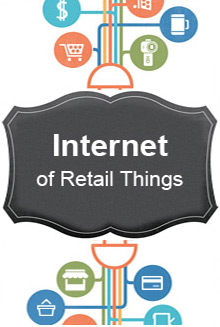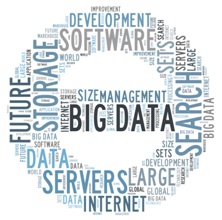Enterprises need to be able to understand and undertake a range of domains to incorporate an M2M platform from embedded solutions, mobile app development or internet space for instance. However, an ideal M2M platform would assist the organization to focus on dedicating its attention on core business functionalities and improvise on innovation, rather than dispersing its competencies for insignificant tasks and measures. Typically there are two sub-parts in a platform which takes care of most of the non-core-business tasks:
- Connected Device Platform (CDP): Allowing organizations to manage cellular connected assets. These provide connectivity monitoring, real-time charging and policy control, and can integrate with existing BSS and OSS platforms.
- Application enablement platform (AEP): These help reduce the overall development time of the applications and abstract out common functionality across domains into a platform.
Enterprises should choose the best combination which fits their need and helps them focus on the core business solution.
Generate ROI in the first year:
For an organization to generate positive returns, it needs to continually cut costs and look at direct and indirect loops to justify its investment. The average annual cost of maintaining the platform software can be just as much as 25 to 75 percent of its initial investment. Therefore, enterprises need to align M2M strategies to the foundational structure in order to ensure a constant short and long-term return of investment.
In case of many organizations, it is not always clear on how the M2M investments would reflect returns. Mostly, organizations want to run a pilot test first to see acceptability in the market and then roll out a full-fledged solution. This two-phased approach can fit very well for enterprises – choose a platform that allows quick prototype, as the market feedback starts flowing in, take a call whether the existing platform can suffice the needs or look at alternatives. This minimizes the upfront investment and also lets enterprises find out if they need to develop their own platform or not.
Back-up the bottom line:
When going in for an M2M platform decision, organizations should ensure it does not just hamper its potential broader business objectives, but also should dedicate its time, asset and revenue to cost-effectively deliver value addition for its bottom-line.
Enterprises will need to consider the initial investment and the running operational cost. It is always beneficial to start with off-the-shelf platforms. Depending on the scale and business growth, enterprises will need to evaluate the point of time when it is better to shift to owning the platform.
Maintain scalability:
When businesses expand, it becomes inevitable for its infrastructure to grow too. Enterprises should consider such an M2M platform that not just caters to its short-term business objectives, but also the long-term. Organizations should ensure that the M2M platform is flexible enough to scale with the business prospects to avoid a situation where in-house infrastructure is incapable, incompetent or insufficient to support the growing magnitude of business.
This is specifically applicable to enterprises which look at doubling up an existing platform into an M2M platform. But the volume, velocity and variety of data which are hallmark of any decent scale M2M solution might render the existing platforms insufficient.
Sometimes, enterprises may think that they do not require a highly scalable platform for solving a specific problem. But they also need to take into account the potential scale in the adjacent areas. For example, if a retail chain is creating a solution for inventory and asset management, they may want to look at supply chain optimization solution as an adjacent area which can use the same platform. Similarly, digital signage can use the same platform. Hence scalability can have different connotations based on the scale of the enterprise. Organizations which can draw a long term blueprint along with the short term blueprint will have an advantage.
Access data with ease:
Organizations should choose an M2M platform where in it is relatively easier for them to convert raw data into actionable insights from devices across its business horizons. What enterprises also need to consider is to what degree the data could be made mobile. When information can be accessed through smart devices, it provides real-time solutions and response to a magnitude of problems in the customer segment.
Platforms which can support multiple protocols or quickly instrument multiple protocols on the device will have an upper hand. Enterprises need to look at the platforms which can have a standard based implementation for device to platform connectivity. Some standards bodies like OneM2M are looking at creating such standards. Enterprises need to watch out for platforms which have standards compliance in the roadmap.
Typically platforms provide access to data via APIs. Enterprises should look for platforms which have implemented some sort of API access security so that the enterprise data is secure.
Along with ease, security of data in motion, data at rest and data at access time needs to be a key consideration for platform selection.
Cloud-based platform:
On-cloud business approaches reduce cost, enhance flexibility and increase agility for enterprises to improve their operational efficiency. Considering the number of enterprises that have got on board with Cloud, organizations should consider the fact that it is imperative for M2M platforms to be compatible with the cloud to not just reduce the cost of ownership but also work on its competitive advantages.
Another security aspect which comes in for cloud based platforms is the geography of hosting the data. If an enterprise has establishments in multiple geographies and some of the government insists on data being local to their country, it may change the usability of a specific M2M platform.
Does the organization have enough business assets to go in for big data storage? What is the degree of expertise it has on embedded applications? Can the enterprise handle complications that may arise out of multiple network subscriptions? There are thousands of concerns enterprises need to address before they go in for an M2M platform. While the above are generic industry thumb-rules organizations should keep in mind, it is important to understand that one plus one may barely equal to two for another. In other words, instead of harping for the ‘right’ M2M platform, it is always advisable to go in for the ‘ideal’ one, for the reason that one size does not fit all.
References:
http://developer.sierrawireless.com/Blog/IoT%20M2M%20Server%20Platforms.aspx

Manu Tayal is a General Manager spearheading the IoT/M2M solutions and service offerings. He comes with a rich experience of 16 years in the IT industry. Within M2M/IoT his focus is on servicing product companies build the right solutions, right from devices to cloud to mobile enabled applications. His role involves technology direction, business development and capability building.
Manu holds a Bachelor’s degree from IIT Roorkee in Electronics and Communications. You can reach him at [email protected].







